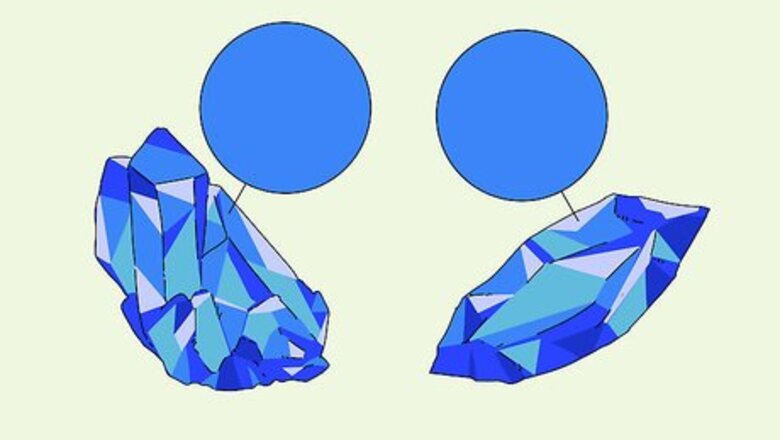
views
Identifying Crystals by Colour
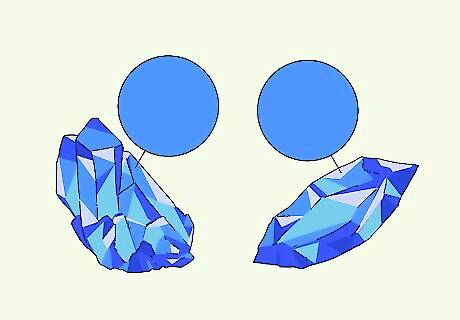
Examine the colour and compare it to crystals in an identification book. This is one of the easiest identification methods and can be done from home with no equipment. Identify what the main colour in the crystal is. Try to use common colours, like red or blue, to describe the crystal rather than unusual colours, like salmon or lilac. Use a crystal identification book that is categorised by colour to match your stone to the correct variety of crystal. If you don’t have a crystal identification book, search online for a crystal identification directory. The Crystal Bible by J. Hall and The Crystal Guide: Identification, Purpose and Values by Patti Polk are widely used identification books.
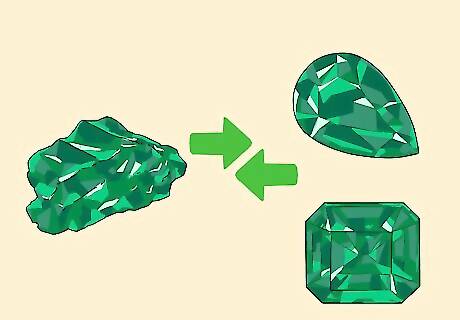
Compare a green stone to a sapphire or emerald. These are 2 of the most popular green crystals. Compare the colour of your crystal to the colour of the crystals in a crystal identification book. If the crystal doesn’t look like sapphire or emerald, compare it to green fluorite.
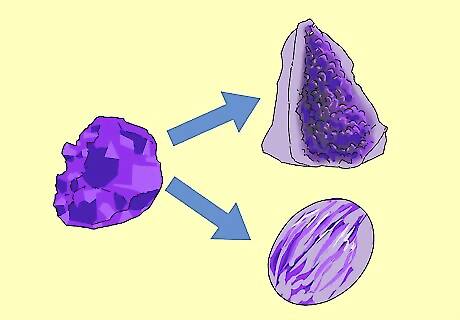
Consider whether your purple crystal is an amethyst or a charoite. Amethyst is the most common type of purple crystal. Match your crystal to pictures of amethyst. If it doesn’t look similar, compare it to charoite. If the crystal doesn’t look like amethyst or charoite, compare it to pictures of other purple crystals.

Check if your yellow or gold crystal is a golden topaz or citrine. These popular golden crystals symbolise wealth and power. Compare the colour of your crystal to pictures of golden topaz and citrine or take it to a crystal shop and compare it to the selection of golden crystals. If the crystal doesn’t look like golden topaz or citrine, check whether it is yellow tiger’s eye or yellow jasper.
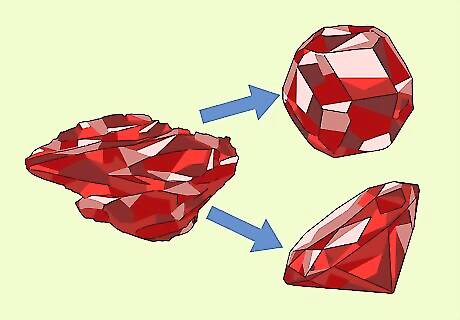
Determine if a red crystal is a garnet or ruby. These red crystals release passion and energy into the atmosphere and their deep colour brings a warming and balancing energy. Match your crystal to pictures of garnet and ruby in a crystal directory. If your crystal doesn’t look like a garnet or ruby, compare it to a tiger’s eye.
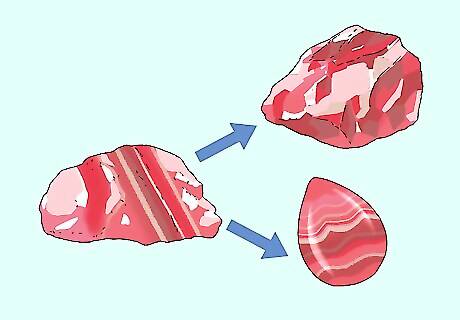
Check if your pink crystal is a rose quartz or a rhodochrosite. These pink crystals help to energise and open the heart and promote a positive mood. Use a crystal book to find the picture that best corresponds with your pink crystal. If your crystal doesn’t look like a rose quartz or a rhodochrosite, compare it to lepidolite, pink tourmaline, and pink sapphire.
Distinguishing a Crystal by Shape
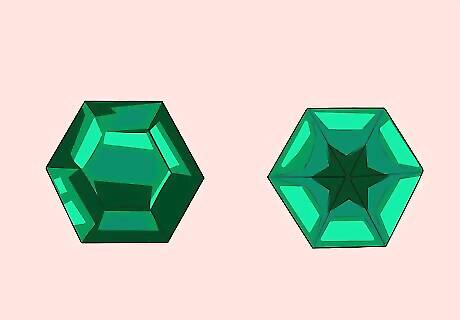
Identify emerald and aquamarine by their hexagonal shape. Examining the shape of a crystal is an easy way to narrow down type of crystal you have. If your crystal has a hexagonal shape, it could be an emerald or aquamarine. If your crystal isn’t green or blue, compare it to other hexagonal crystals. Look at the crystal from different angles to help identify what shape it is.
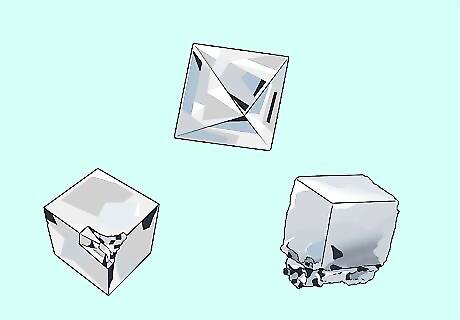
Recognise pyrite, diamonds, and fluorite by their cube shapes. These crystals form in a square pattern. Check your crystal for a square base and an elongated cube shape. Compare the colour of the crystal to pyrite and diamonds. If it doesn’t match, use a crystal directory to match the crystal to other cube-shaped crystals. The balanced structure of these cubic crystals is believed to create a peaceful and harmonious atmosphere. Pyrite is usually a brass colour and diamonds are normally white or clear.

Identify peridot by its orthorhombic shape. Orthorhombic crystals form a long spear shape and aren’t symmetrical. Look at the crystal from different angles to check that it is not symmetrical. Match your crystal to pictures of peridot in a crystal directory. If your crystal doesn’t match pictures of peridot, compare your crystal to other orthorhombic crystals.

Recognise apophyllite and zircon by their tetragonal shape. A tetragon is symmetrical and looks like 2 4-sided pyramids connected at the base. Compare your crystal to pictures of apophyllite and zircon. If it doesn’t resemble the pictures, compare your crystal to other tetragonal crystals. Apophyllite and zircon come in a variety of colours.
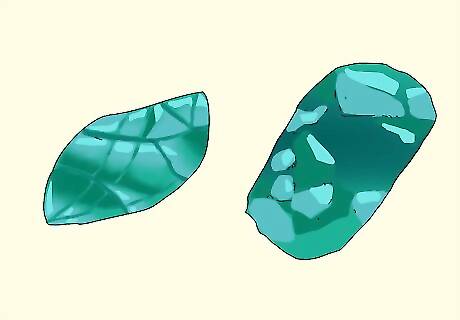
Identify labradorite and turquoise by their triclinic shape. This shape looks like an asymmetrical elongated oval. If your crystal is symmetrical, it is unlikely to be triclinic. Match your triclinic crystal to pictures of either labradorite or turquoise. If it doesn’t match either crystal, compare it to pictures of other triclinic rocks. The turquoise crystal is blue, whereas labradorite comes in various colours.



















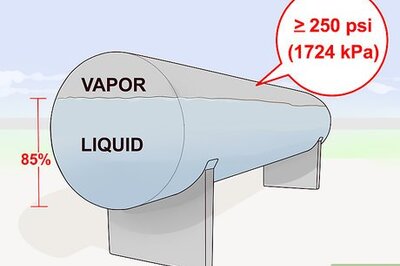
Comments
0 comment